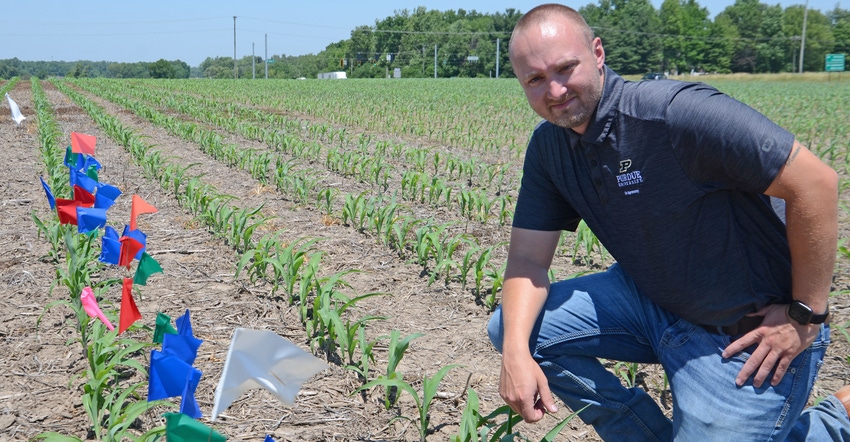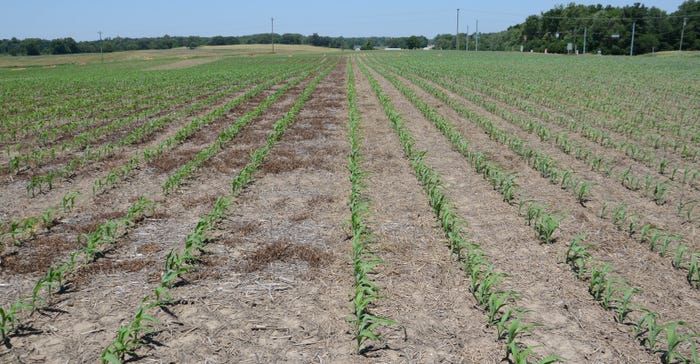
How should you equip your planter to no-till into cover crops? What type of closing wheels should you attach on each row? If you still use rubber press wheels to close, should you replace them?
Various commercial companies are making these comparisons and reporting results, and a wide variety of aftermarket closing wheels is on the market. But there is little university research that addresses these questions. Purdue Extension corn specialist Dan Quinn is trying to change that as he seeks answers to farmers’ questions.
“More farmers are seeding cover crops today, and so there are more questions about how to equip planters to no-till into cover crops effectively,” Quinn says. “My goal is to establish practical research to answer some of their questions.”
Closing wheel comparisons
This is the first year for these trials, Quinn says. With the help of Riley Seavers, a Purdue graduate student, they established plots comparing corn no-tilled into cereal rye with corn no-tilled into soybean stubble without cereal rye. The plots were sprayed before planting, to terminate the cereal rye and weeds on the non-cover crop plots.
“We’re also looking at different kinds of closing wheels,” Quinn says. “We’re comparing standard rubber closing wheels to cast-iron wheels with spikes and other aftermarket wheels. They varied in how aggressive they were with the soil.”
Because choice of closing wheel could impact time to emergence, Quinn and company flagged 1/1,000 of an acre in each replicated plot to track plant emergence. He notes there are differences, but he’s waiting until he has data throughout the season, including aerial image data from drone flights, to draw conclusions. Since there are variations in soil type within the field, he hopes to tease out information on how each closing wheel performed in different soils.
These plots are located along the west side of U.S. 231 at the Throckmorton Purdue Agricultural Center north of Romney, Ind. The trial will be taken to yield.
Working with another researcher, Quinn is conducting a similar trial with sweet corn at the Pinney Purdue Ag Center in northern Indiana.
Early result
You don’t have to wait until next winter to learn one outcome from this trial, and you don’t need a yield monitor to pick up the difference. Proponents of cover crops talk about help on weed control, especially from cereal rye.

“Weeds were growing in the field this spring because rain delayed planting into late May,” Quinn says. “You can see right to the row where plots without cereal rye and the cereal rye plots meet.
“There were a lot more weeds growing on soybean stubble without cereal rye. It was even very evident after weeds and rye died, and corn was up and growing. You could still tell exactly where cereal rye grew, right to the row.”
Read more about:
No tillAbout the Author(s)
You May Also Like




